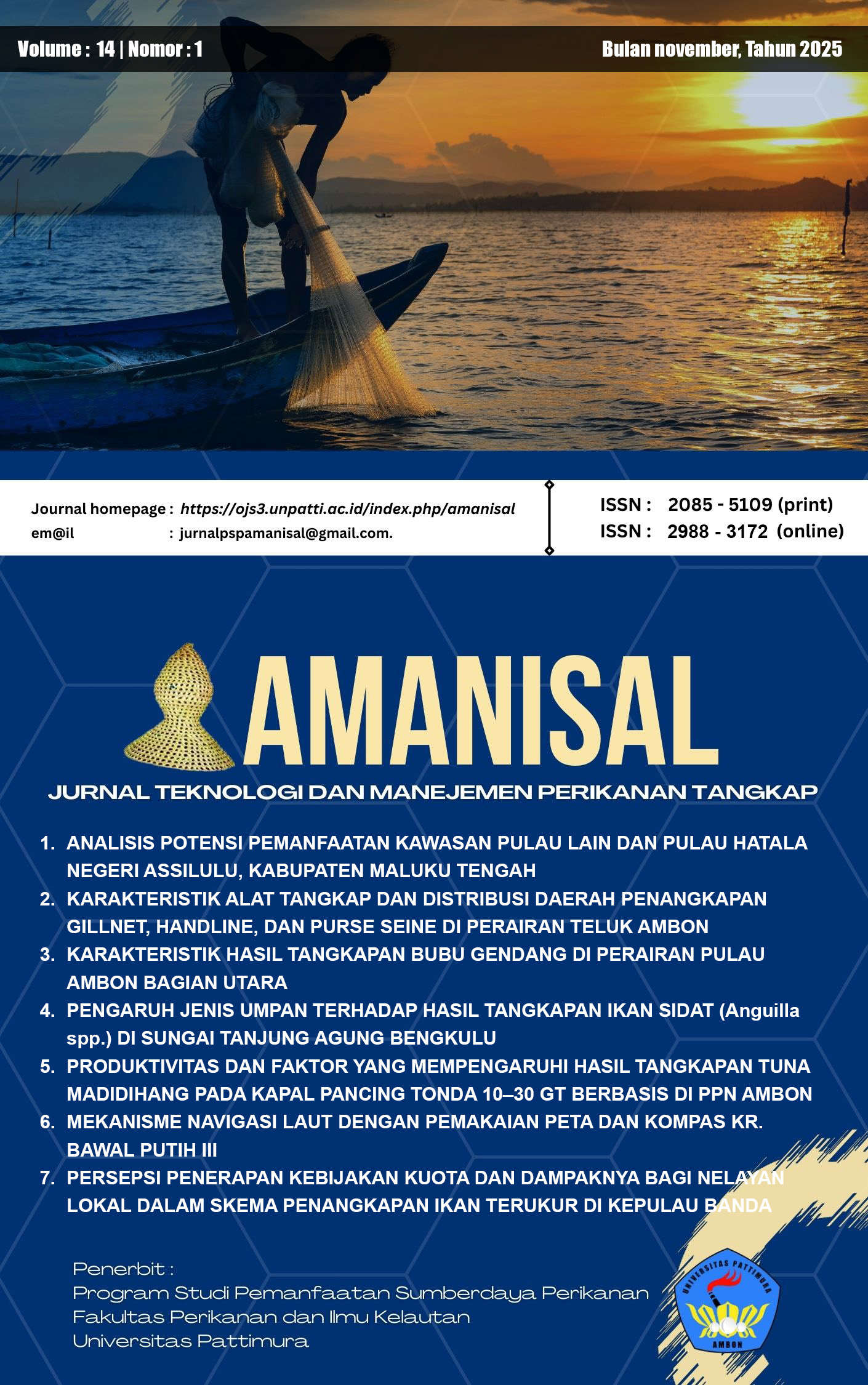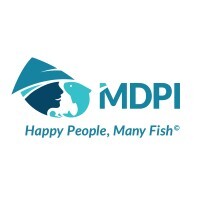PRODUKTIVITAS DAN FAKTOR YANG MEMPENGARUHI HASIL TANGKAPAN TUNA MADIDIHANG PADA KAPAL PANCING TONDA 10–30 GT BERBASIS DI PPN AMBON
Abstract
The development of 10–30 GT trolling line fisheries in Maluku has grown significantly in recent years, particularly with the influx of Sinjai operating in Fisheries Management Area (FMA) 714. These fleets contribute to the production of yellowfin tuna (Thunnus albacares), a high-value fishery commodity. This study aims to analyze the productivity and the effects of production factors on the tuna catch of trolling vessels based at the Archipelago Fisheries Port (PPN) Ambon. Data were collected from 26 active vessels over one year and analyzed descriptively and using multiple linear regression with the backward method. Observed variables included vessel size (GT), trip duration, fuel consumption, ice quantity, and crew size were treated as independent variables. Productivity, measured as catch per unit effort (CPUE), ranged from 613.4 to 2,829.9 kg/trip. The analysis revealed that vessel size had a positive effect on catch, while longer trip durations had a negative impact. The best-fit regression model, Y = 1507.735 + 80.822X₁ – 109.699X₂, explains 43.8% of the variation in tuna production. Extended trip durations of more than 12–18 days reduced productivity due to crew fatigue, limited ice storage, and declining fish quality. This study recommends optimizing trip durations to 10–12 days, improving logistical efficiency, adopting sustainable cooling technologies, and integrating oceanographic and seasonal data to enhance fishing efficiency and support sustainable fleet management in eastern Indonesia.
Downloads
Copyright (c) 2025 Hasan Rumaf, Haruna Haruna, Stany R. Siahainenia, Ruslan H. S. Tawari

This work is licensed under a Creative Commons Attribution-ShareAlike 4.0 International License.






